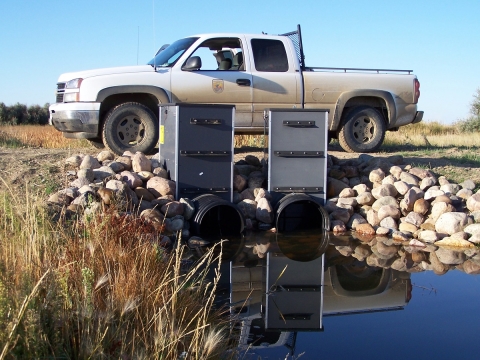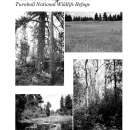States
WashingtonAs outlined in the Comprehensive Conservation Plan (CCP), the refuge exists to provide habitat conditions essential to the conservation of migratory birds and other wildlife in a variety of wetland complexes. Managers use a variety of tools to achieve this goal.
Wetland Restoration
Wetland restoration often involves the use of heavy equipment to achieve management objectives. Examples include using heavy equipment to disk invasive monocultures of reed canary grass. Other times, areas are excavated to create deeper pools that promotes growth of other wetland species like cattail and bulrush. These deeper pools increase open water habitat for wildlife and promote better climate resiliency by allowing water to persist on the landscape for longer.
Sometimes, water control structures are removed, installed, or replaced, depending on topography and the needs of the project.
Recent restorations include the McKinlay Wetland Restoration Project (2023/24), the Frog Pond Restoration Project (2024) along the Auto Tour Route, and beginning in the fall of 2024, the Finger Ponds Restoration Project.
Water Level Manipulation
Turnbull has over 130 wetlands. Twenty two of these have water control structures, which allows staff to manipulate water levels. Continued monitoring of water levels on the refuge allows managers to optimize habitat use for a variety of wildlife, including waterfowl, amphibians, reptiles, moose, and a variety of aquatic and semi-aquatic plants.
These flora and fauna and their habitat are at risk due to several factors, including altered hydrology from historical diversions, climate change climate change
Climate change includes both global warming driven by human-induced emissions of greenhouse gases and the resulting large-scale shifts in weather patterns. Though there have been previous periods of climatic change, since the mid-20th century humans have had an unprecedented impact on Earth's climate system and caused change on a global scale.
Learn more about climate change , and non-native species such as reed canary grass.
Invasive Species Management
One of the biggest challenges to effective habitat management is invasive species invasive species
An invasive species is any plant or animal that has spread or been introduced into a new area where they are, or could, cause harm to the environment, economy, or human, animal, or plant health. Their unwelcome presence can destroy ecosystems and cost millions of dollars.
Learn more about invasive species management. Some of the tools managers can use to deal with noxious weeds and other non-native vegetation includes mechanical treatments like mowing and disking, as well as chemical treatments (herbicides). Depending on weather and staff availability, prescribed burns might also be used.
In areas that have been treated to remove invasive plants, staff plant native species such as cottonwood, red osier dogwood, hawthorn, and aspen. Every year, the public is invited to help with these tree plantings in the Pine Creek area near Refuge Headquarters.








